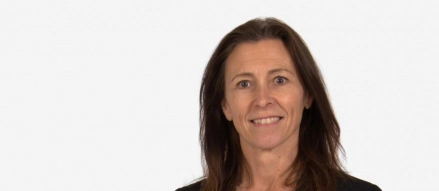
Central banks make slow progress on gender diversity
- Gender diversity in central banks, sovereign funds and European public pension funds is up slightly from last year, but progress is slow.
- One-fifth of central banks have no women in senior positions, unchanged from last year.
- Only 14 central banks globally are headed by a woman, including the European Central Bank led by Christine Lagarde, its first female president.
- 15% of central banks reserve seats for women on their board of directors or monetary policy board.
- 54% have implemented a gender diversity programme.
The OMFIF Gender Balance Index tracks the presence of men and women in senior positions at central banks, sovereign funds and public pension funds. The study, now in its seventh year, scores and ranks institutions based on gender balance in their management and boards.
Spain tops the central banks index, followed by Aruba, Iceland and Malaysia. Asia Pacific’s score improves the most, and Europe remains the best-performing region. The central banks global score remains disappointing at 27.5 but increases 11% from 24.8 in 2019. This is the second consecutive year of improvement from 19.4 in 2018. A score of 100 means perfect balance.
Out of 173 central banks, one-fifth have no women in senior positions or monetary policy committees. More than half of these are in the Middle East and Asia Pacific. Only 14 central banks globally are headed by a woman, including the European Central Bank led by Christine Lagarde, its first female president.
‘It is encouraging that more women are progressing within central banks and that diversity is being legitimised as a valuable and necessary consideration in recruitment,'says Danae, Chief Economist and Director of Research. 'There is wider acceptance of the benefits of diversity, and that’s progress. But there is a lot more still to do. As our survey shows, central banks are only beginning to put in place policies to actively level the playing field for those who have faced barriers to enter and progress, and there are still huge differences from country to country.’
Sovereign funds’ management and boards remain very imbalanced, although they show improvement similar to central banks. The overall score increases marginally by 8% to 19.5 from 16.8. Only eight out of 72 funds are headed by women, unchanged from last year. North America is the best-performing region, but lowest-scoring Middle East makes the biggest leap.
European public pension funds perform the best and improve the most among the three institution types. The overall score climbs by 12% to 46.3 from 41.3 the previous year. The number of female-led funds rose to 36 from 31. Nordic countries did well, with Iceland and Norway topping the list.
Global survey delves into central bank diversity policies
To complement the index, OMFIF conducted a global survey of 46 institutions consisting of 44 central banks and two multilateral organisations with functions related to financial stability. The first of its kind, this survey asked what measures institutions have in place to help correct gender imbalance and promote diversity and inclusion.
It found that 15% of central banks reserve seats for women on their board of directors or monetary policy board. More than half (54%) of central banks have implemented a gender diversity programme that encourages the upward progression of women. For some respondents, this includes mentorship and leadership training specifically for women.
Emmanuel Dooseman, Partner, Global Head of Banking at Mazars says, ‘The Index shows that gender balance in central banks is increasing, but there is still a huge amount of work to be done. As regulators and supervisors of other financial institutions, central banks play a crucial role in shaping the future direction of the global business landscape. That’s why we hope the Index acts as a wake-up call for leaders: they need to do more to create and implement progressive policies that support women at work.’
All respondents have some form of maternity leave in place, with 35% going above and beyond the minimum legal requirement. The majority of respondents (63%) offer between three to six months of paid leave. Almost all respondents have a paternity policy in place, but nearly half (41%) grant only one to two weeks of leave.
###
About the research
The OMFIF Gender Balance Index scores institutions based on gender balance among senior staff, weighted by seniority. Governors and chief executives are given the highest weights. Members of executive teams receive higher weights than those in non-executive roles, such as members of monetary policy committees.
The score for each institution is calculated by taking the ration of the female and male components. Global and regional scores for central banks are weighted by corresponding countries’ GDP. The country, regional and global GBI score for pension funds and sovereign funds are weighted by the value of these institutions’ assets under management.
About the report
The full report can be downloaded at omfif.org/gbi20.
Contact at Mazars
Lorraine Hackett, Global Brand & Communications Director, Mazars
Lorraine.Hackett@mazars.co.uk / 07881 283 962
About Mazars
Mazars is an internationally integrated partnership, specialising in audit, accountancy, advisory, tax and legal services [1]. Operating in 91 countries and territories around the world, we draw on the expertise of 40,400 professionals - 24,400 in the Mazars integrated partnership and 16,000 via the Mazars North America Alliance - to assist clients of all sizes at every stage in their development.
http://www.mazars.com|http://www.linkedin.com/company/mazars|https://twitter.com/mazarsgroup
Contact at OMFIF
Stefan Berci, Communications Manager
Stefan.berci@omfif.org / +44 02078562401
About OMFIF
OMFIF is an independent think tank for central banking, economic policy and public investment, providing a neutral platform for public and private sector engagement worldwide. With teams in London, Singapore and the US, OMFIF focuses on global policy and investment themes relating to central banks, sovereign funds, pension funds, regulators and treasuries. Global Public Investors with investable assets of $37.8tn are at the heart of this network.
www.omfif.org
Want to know more?

